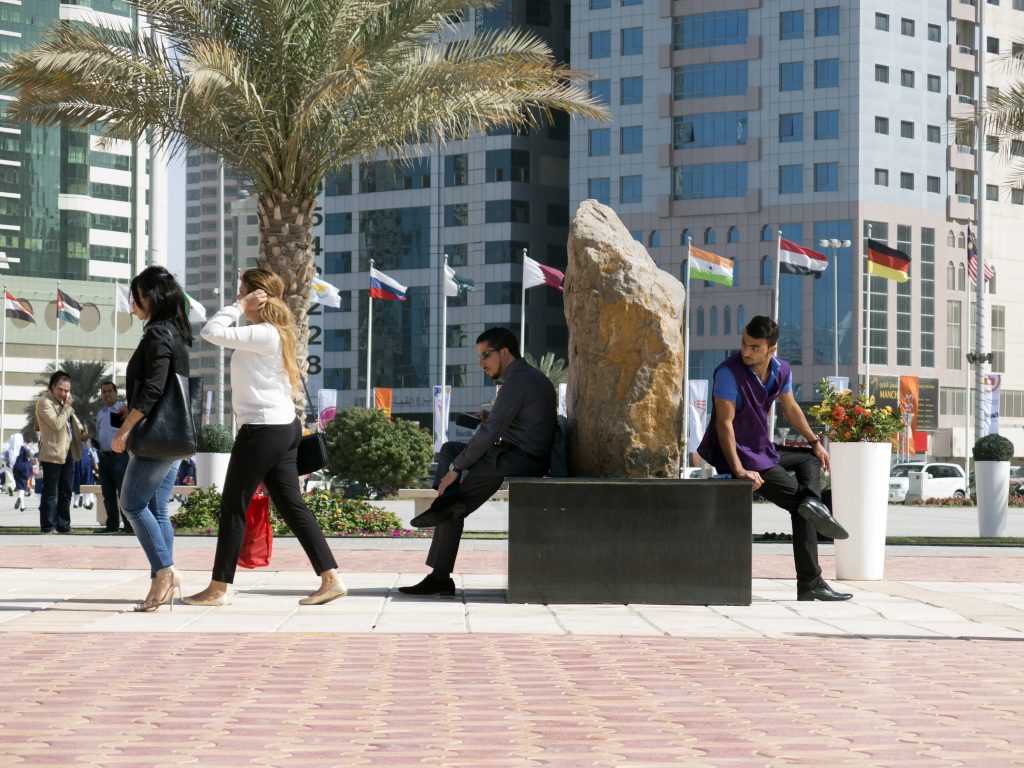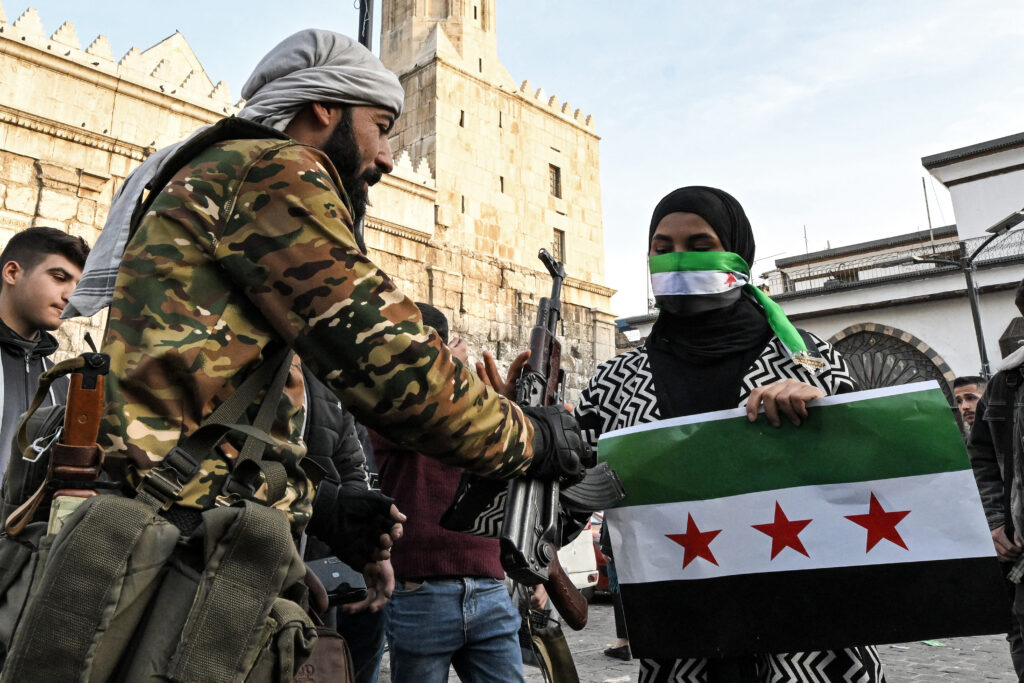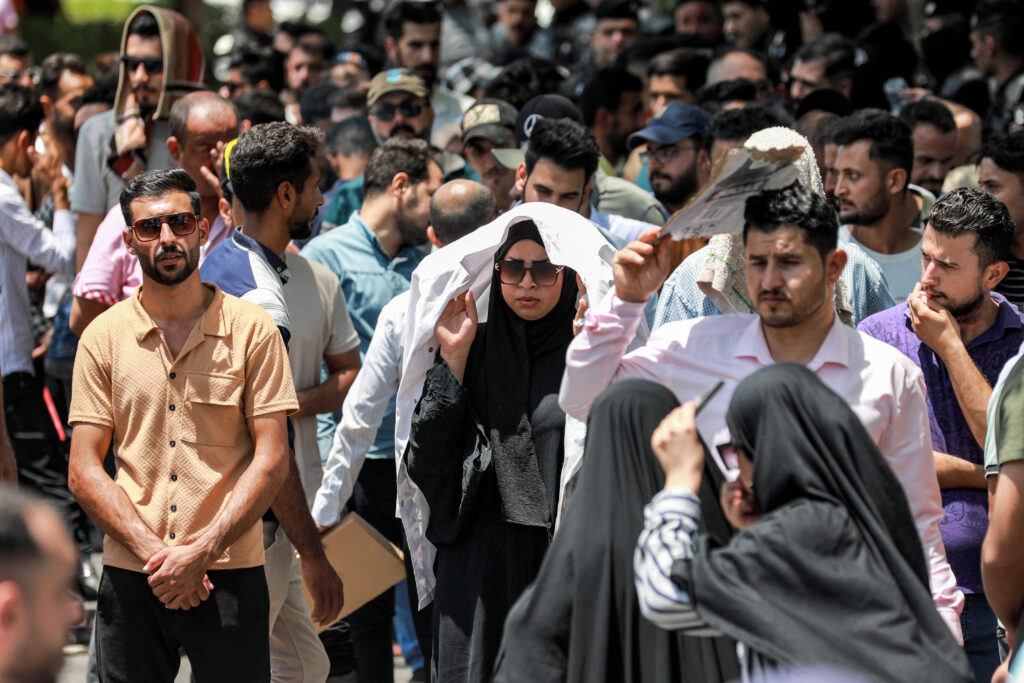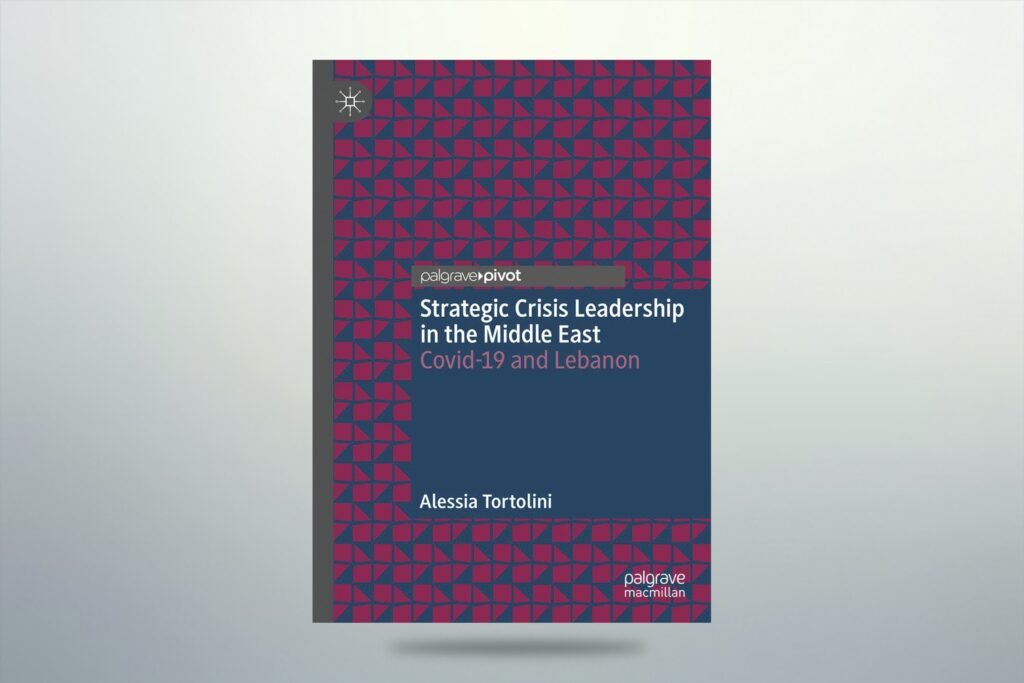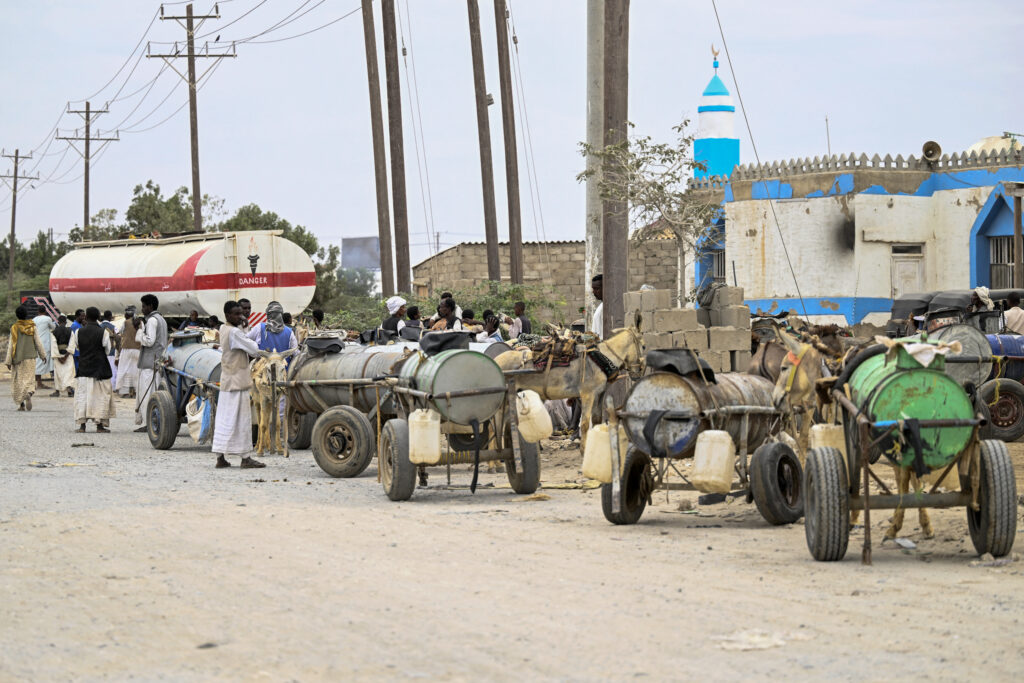In the past few years, many things have changed in the Gulf region. Oil prices have collapsed since mid-2014, the United States has redefined its policy towards the region and Turkey is emerging as the dominant power in the Middle East. Against this background, the aim of the UAE series of papers is to provide a comprehensive, interdisciplinary understanding of how the country is responding and adapting to the new reality. The papers cover different aspects of the UAE such as the economy, demographics, society, technology, foreign policy and security.
In a country where foreigners account for nearly 90 per cent of the population, the Covid-19 pandemic has revived the nagging question of the sustainability and resilience of the UAE’s model of society. Demographic imbalance, temporariness of stay and fragility of residency status are its essential features and raise a number of interrelated challenges: the link between residence and employment; access to Emirati citizenship; social, cultural and urban inclusion; and preservation of minority rights, privileges and identity.
CLICK HERE FOR THE PDF.
By Hadrien Dubucs
Hundreds of thousands of residents stuck abroad by the closing of borders. Workers losing their jobs and only incomes and unable to fly back to their homes in Kochi, Karachi or Manila. These are some of the social challenges that the Covid-19 pandemic has shed a harsh light on. They are more acutely felt in the United Arab Emirates (UAE) than in the other countries in the region, and indeed in the rest of the world, because they are triggered by a unique demographic pattern: foreigners in the UAE account for nearly 90 per cent of the population.
The high rate of foreign-born inhabitants in the UAE stems from an economic development model that is based on the oil industry[1] and fast-growing urbanisation, which together have triggered high levels of employment and substantial growth in a large number of services. From the 1960s to the 1980s, the country’s two-digit population growth was fueled by a massive influx of foreign workers. That inflow of foreigners has been evolving, depending on the structure of national and community-based recruitment channels as well as the geopolitical context in the region[2] — workers from Arab countries have been gradually replaced by those from Sri Lanka, Bangladesh and the Philippines — while there are also long-established and expanding communities of Pakistanis and Indians, a large number of whom came from Kerala.[3] Over the last decades, this dependency on migrants has grown, resulting in an increased demographic imbalance that is seldom officially addressed as an issue. The demographic patterns consist of a world-record overrepresentation of males (70 per cent) and a vast majority of young adults (65 per cent belong to the 25–55 age group). The large number of foreigners also appears to be a structural feature, given that foreign children aged 0–14 outnumber Emirati ones.[4]
Guest Workers Rather than Immigrants
Beyond the quantitative patterns, these numbers highlight the question of citizenship and, more widely, the sense of identification with a national narrative as well as an urban society. As a minority, the Emiratis are keen on securing their rights, identity and privileges based on the oil windfall. The demographic imbalance has thus obviously raised the question of the conditions under which foreigners can access Emirati citizenship and the ease of becoming “nationals”. The rules are quite clearly restrictive. Effectively, a foreign-born person cannot become Emirati. There are very few exceptions, as in the case of children of a mixed couple, one of whom must be an Emirati national.[5] Until recently, such instances of naturalisation applied only to children whose fathers were Emirati nationals. Only in 2017 was the 1972 federal law on nationality amended to enable, under strict conditions, the acquisition of Emirati nationality by children of an Emirati mother and a foreign father.
Significantly enough, the authorities and official documents seldom use the term “migrant”. Anyone in the foreign workforce, regardless of level of qualification and type of work done, is considered an “expatriate”. The emphasis on their residency status, which is tied to their employment contracts, harks back to the notion of “guest workers” prevalent in the past in some countries, referring to the system of labour importation rather than international migration, with temporary stays and precarious employment being its characteristic features.
One of the current debates relating to foreign workers focuses on the kafala system (or sponsorship system, as it is generally translated).[6] This system sets up a close legal relationship between foreign workers and their kafil or sponsors, typically their employers, who are held responsible for the foreigners’ behaviour and their stay in the country, which cannot exceed the duration of their employment contracts. Used in most countries in the Arabian peninsula, this system has been the subject of proposed changes over the past few decades. There are two main reasons for this desire for change. The first is economic: the ties with a kafil are believed to hinder the fluidity of the labour market since they prevent workers from moving from one employer to another. The second is related to human rights: the one-sided dependency relationship created by the kafala — especially in the case of the 150,000 to 300,000 female domestic workers[7] — is sometimes accompanied by mistreatment and abuses, such as passport retention (officially forbidden in the UAE) and unpaid or dramatically low wages. As in the case of neighbouring countries in the Gulf Cooperation Council, the UAE has come under criticism and pressure from non-governmental organisations (NGOs) and foreign embassies, resulting in the implementation of some, albeit minimal, protection for foreign low-skilled workers. This includes a minimum wage level, restrictions on working hours and access to mediation or juridical support in case of labour disputes. But beyond the technical and juridical questions of the kafala, the fragile residency status continues to characterise the vast majority, if not all, of the foreign residents.
Temporary Residents: Between Sense of Belonging and Transient Status
From the perspective of the foreign resident, this status has created a peculiar sense of belonging to the country and the city life, which was captured in Deepak Unnikrishnan’s Temporary People.[8] His collection of testimonies from young foreigners born or raised in the UAE reflects the contradictions in the daily experience of generations of inhabitants: the tension between strong affective ties to the country and an awareness of a residency status that is essentially fragile and always subject to cancellation, given the constant risk of losing one’s job, retirement, or expulsion in the event of a political crisis (eg the Gulf war of 1990–1991, the Arab Spring of 2011 or the blockade of Qatar in 2017). This feeling of uncertainty prevails even among young, highly skilled Arab foreigners, who are well-integrated into the country and deeply attached to the city where they were born and raised.[9] Over the past decade, a few tentative first steps have been taken towards enabling foreigners to access real estate or business ownership, under strict conditions and in specific zones. However, the job market-based management of migration flows and foreign residents remains the undisputed model. Thus, the temporariness as well as flexibility of migrant-dominated societies like the UAE results in their becoming essentially “transit states”[10] or “temporary cities”.[11]
A Pervasive Yet Hardly Visible Segregation
Given that reliable and precise data is not available, researchers struggle to draw an accurate typology of the social–spatial patterns of the foreign population. The multifarious nationalities in the country hardly fit into a clear social and professional distribution. Some jobs, especially low-skilled ones, are clearly concentrated around specific nationalities — eg construction jobs dominated by Indian nationals; domestic work dominated by Filipinas; lifeguards dominated by Sri Lankan nationals; high-rise window cleaners dominated by Nepali nationals. But, there has been an evolution of nationalities within some professions over the years. For example, taxi drivers were mostly Pakistanis or Indians at one time but today there are more Nigerians, Kenyans, Ugandans and Cameroonians among them. In addition, a single nationality can span various rungs of the social ladder. Among the Indian community, by far the largest nationality in the UAE, one can count, alongside low-skilled workers under short-term contracts, many well-off families who have been residing in the UAE for two, three and sometimes four generations and who made their fortunes in the trading or retail sector.[12] The most famous example is the successful businessman Yusuff Ali. Born in Kerala, he migrated in 1973 to Abu Dhabi and in the 1990s launched the group that owns the Lulu chain of hypermarkets, which he has since expanded into the global retail and hospitality sectors.
The interplay between social position and nationality tends to blur the frontiers of these communities. But there is still a clear divide between the single male low-skilled worker (usually called “bachelors”, even if they have wives and families back in their home countries) and others. Recruited in high numbers for short-term contracts by construction companies, they represent the main social profile in the UAE (around 2.5 million). They are a familiar sight in the city, although their daily activities are strictly contained in a few locations: construction sites surrounded by palisades; daily commuting routes; and labour camps (sometimes called “temporary camps” or “construction villages”). Hundreds of thousands of workers can be accommodated in the biggest of these labour camps, Sonapur, which is in the in the western suburb of Dubai, or in Industrial City of Abu Dhabi I and II in Musaffah, the gigantic industrial district to the southwest of Abu Dhabi. These camps look like standard mid-rise buildings, and the newer ones are equipped with services and facilities such as supermarkets, mosques and health facilities. What distinguishes these camps from common social housing neighbourhoods, however, is the precinct and 24-hour control, which creates a segregated daily life “behind the curtain”, with poor access to the city and its more appealing parts.[13] Such living conditions have been the focus of scrutiny and criticism by NGOs, as a result of which there is now greater compliance with international humanitarian standards.[14]
The “Tolerance” Policy: Façade or Move Towards Social Inclusion?
“Tolerance” has become a motto in the UAE’s official discourse since the late 2010s. A minister of state for Tolerance was nominated in 2016, and 2019 and 2020 were both named “Year of Tolerance”. Based on the notion of inter-community respect and sectarian pluralism, the notion of tolerance was marked by widely publicised re-naming operations (involving bridges and mosques, for instance), high-profile events (the visit of Pope Francis in February 2019, the first papal visit to the Arabian peninsula) and multifaith initiatives such as the plan to build an “Abrahamic Family House”, a complex intended to hold a mosque, church and the UAE’s first official synagogue.[15] Declaring that the Louvre Abu Dhabi will be the world’s first “universal” museum and identifying cultural diversity as one of the themes of the Dubai Expo 2020 (now rescheduled to 2021) are some of the other initiatives consistently depicting the country as an oasis of tolerance within a region torn by sectarian and cultural divides. The tolerance mantra has also percolated into more unexpected realms of public policy. For example, urban planning as well as the design of public space has displayed a notable consideration for the question of cultural diversity.[16]
Notwithstanding the calls for tolerance and respect of cultural diversity, the acknowledgement and preservation of national heritage and identity has clearly been a central concern of the UAE’s as the share of nationals in the population decreases. Recurrent debates about mixed marriage and “westernisation” of behaviours have been agitating social networks and media platforms and can be seen as the product of an anxiety over the loss of national heritage. The country’s Emiratisation policy (Tawteen in Arabic) has provided a partial answer to this fear at the level of the jobs market. Officially launched through the 1980 Federal Labour Law, it was enhanced in 2005 with the implementation of quotas, and again in 2017 with a set of measures aimed at facilitating Emirati citizens’ access to skilled jobs while also increasing their presence in the private sector.[17]
The Covid-19 crisis has thrown into the spotlight the UAE’s hitherto underexamined dependence on the foreign workforce. So far, there has been no xenophobic public expression — as was the case in Kuwait, for example — even though the country’s epidemiological challenges consist mostly in coping with the spread of the disease in dense labour camps where social distancing is much more difficult to achieve. But the sustainability of the UAE’s model of society, and its resilience in the face of an unprecedented crisis, are now more than ever at stake. The dramatic impact of the pandemic on the job market, as well as the challenges of coping with strict restrictions on international travel, necessarily jeopardises the stay of millions of foreign workers and serves as a clear reminder that they are not exactly at home.
About the Author
Dr Hadrien Dubucs is an associate professor at Sorbonne University (Paris). Since 2016, he has been the head of the Geography Department at Sorbonne University Abu Dhabi. He is a member of the research centre Mediations at Sorbonne University (Paris).
Image caption: People of the United Arab Emirates. Photo: Mostafameraji / Wikimedia Commons
Footnotes
[1] Frauke Heard-Bey, From Trucial States to United Arab Emirates (Dubai: Motivate Publishing, 2005); Nelida Fuccaro, Histories of City and State in the Persian Gulf (Cambridge: Cambridge University Press, 2009); Laavanya Kathiravelu, Migrant Dubai: Low Wage Workers and the Construction of a Global City (New York: Palgrave Macmillan, 2016).
[2] Françoise De Bel-Air, “Demography, Migration and the Labour Market in the UAE”, Gulf Labour Markets and Migration 7 (Gulf Research Centre, 2015).
[3] Françoise De Bel-Air, “Demography, Migration and the Labour Market”.
[4] Françoise De Bel-Air, “Demography, Migration and the Labour Market”.
[5] Paul Dresch, “Debates on Marriage and Nationality in the United Arab Emirates”, in Monarchies and Nations. Globalisation and Identity in the Arab States of the Gulf, edited by Paul Dresch and James Piscatori (London: I B Tauris, 2005), 136–157; Jane Bristol-Rhys, Emirati Women: Generations of Change (London: Hurst & Company, 2010).
[6] Gilbert Beaugé, “La kafala: un système de gestion transitoire de la main-d’œuvre et du capital dans les pays du Golfe,” Revue Européenne des Migrations Internationales 2, no. 1 (1986): 109–22; Noora Lori, “Temporary Workers or Permanent Migrants? The Kafala System and Contestations over Residency in the Arab Gulf States”, Note de l’Ifri (Fall 2012); Anh Nga Longva, “Keeping Migrant Workers in Check: The Kafala System in the Gulf”, Middle East Report 211, Special issue “Trafficking and Transiting: New Perspectives on Labor Migration”, 1999.
[7] Rothna Begum, Janet Walsh, Nisha Varia, Nicholas McGeehan, Malcolm Smart, Clive Baldwin, Tom Porteous, “‘I Already Bought You’: Abuse and Exploitation of Female Migrant Domestic Workers in the United Arab Emirate”, Human Rights Watch, 2014.
[8] Deepak Unnikrishnan, Temporary People (New York: Restless Books, 2017).
[9] Laure Assaf, “Jeunesses arabes d’Abou Dhabi [Émirats arabes unis): catégories statutaires, sociabilités urbaines et modes de subjectivation” (PhD diss, University of Paris 10 Nanterre, 2017).
[10] Abdulhadi Khalaf, Omar AlShehabi, Adam Hanieh (eds), Transit States: Labour, Migration and Citizenship in the Gulf (London: Pluto Press, 2014).
[11] Yasser Elsheshtawy, Temporary Cities: Resisting Transience in Arabia (Milton Park, Abingdon, Oxon: Routledge, 2019).
[12] Neha Vora, Impossible Citizens: Dubai’s Indian Diaspora (Durham: Duke University Press, 2013).
[13] Yasser Elsheshtawy, Dubai: Behind an Urban Spectacle (London: Routledge, 2010), doi 10.4324/9780203869703.
[14] As an example, ZoneCorps, one of the largest operators in industrial zones and workers’ accommodation in the UAE, state that their “high quality accommodation for industrial and economic activities workers and construction workers which have been built as per international specifications compliant with the standards of both the United Nations and Human Rights”. See their official website at https://www.zonescorp.com/en.
[15] Examples of constructions involved in the re-naming exercise include the Sheikh Mohammed bin Zayed Mosque in Al Mushrif, Abu Dhabi, re-named Mariam, Umm Eisa (Arabic for “Mary, the mother of Jesus”). Also, the pedestrian bridge over Dubai Canal was named “Tolerance Bridge”.
[16] Abu Dhabi Urban Planning Council, Abu Dhabi Public Realm Design Manual, 2011.
[17] See the official website of the UAE government, https://u.ae/en/information-and-services/jobs/vision-2021-and-emiratisation/emiratisation-

